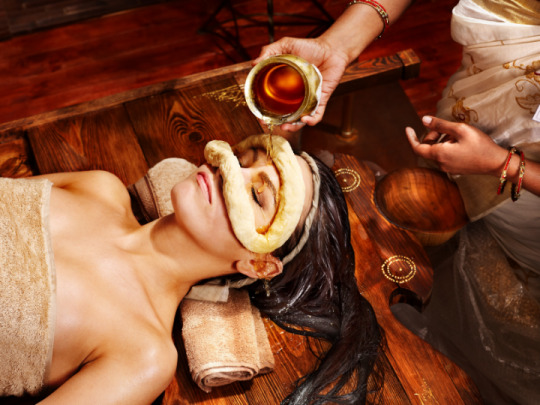#type 1 diabetes treatment in ayurveda
Text
Best Ayurvedic Medicine for Type 1 Diabetes | SAISA Medi
SAIRUB Heal Diaba Care is the best Ayurvedic medicine for type 1 diabetes in India, as it helps treat diabetes mellitus naturally. This medicine helps to maintain your blood sugar level naturally as it stimulates insulin production, strengthens microvascular tissues to prevent heart attacks, etc. Buy this medicine today!
#ayurvedicmedicine#diabetes treatment#type 1 diabetes#diabetes care#bloodsugarcontrol#naturalremedies#diabetes prevention#diabetes management#diabeteswellness#herbal medicine#naturalhealing#healthcare#bloodsugarbalance#wellnesssolutions#diabetescontrol#holistichealth#medicinal herbs#ayurveda#diabetes
0 notes
Video
undefined
tumblr
Vedobi | Ayurvedic treatment for prediabetes | ayurvedic treatment for diabetes
know more information- https://www.vedobi.com/product/vedobi-diaba-free-lotion-110ml-30ml
#ayurvedic treatment for diabetes#ayurvedic treatment for prediabetes#ayurvedic treatment for type 1 diabetes#ayurvedic treatment for diabetic patients#high sugar ayurvedic treatment#Ayurvedic Remedy For Diabetes#diabetes ki ayurvedic dawa#diabetes home remedies ayurveda
1 note
·
View note
Text
Rejuvenate yourself with Ayurveda and Yoga Campaign

Rejuvenate yourself with Ayurveda and Yoga Campaign, Ayurveda , Doctor , Treatment , Nadi Pariksha , Medicine , Pure Herbs ,Sudarshan Kriya , Yoga , Meditation in Dombivli,Kalyan, Vithalwadi , Ulhasnagar,Ambernath,Badlapur,Thakurli
Mumbai, Delhi , Bangalore , Hyderabad , Ahmedabad , Chennai , Kolkata , Surat , Pune , Jaipur , Lucknow Kanpur , Nagpur , Indore , Thane , Maharashtra,India , United States ,
Netherlands , France , Ukraine , Germany , Indonesia , Bulgaria , United Kingdom , Ireland , Russia , Canada , Singapore , China , Poland , Japan , South Korea , Brazil , Egypt , Portugal , Spain , Azerbaijan , Australia .


Day 1
A Psychologist par excellence, Maharishi Patanjali was a seer who lived sometime around the 2nd century BCE. He knew the twists and turns, the pitfalls and the intricacies of the labvrinthian miracle called the mind.
Maharishi Patanjali was not only well versed with the craftiness of this mind but also knew a way to master the mind. The definitive authority on the body, mind and soul, his Yoga Sutras are an eye opening account, and perhaps the most advanced textbook of psychology.
2200 years later, this text is still the authority on the biggest global trend, that is Yoga. 2200 years later, his text finds relevance in our lives cutting across languages, cultures, borders, time. Yoga is helping people across the world deal with life and living, even today. But what is one supposed to make of the sutras written almost like a computer code?
According to Patanjali, 'Santosha' or contentment is the basic requirement for growth. But how do we get there in this day and age of anxiety and depression?
Gurudev Sri Sri Ravi Shankar Ji decodes the Sutras with his customary wit and elan, making it an essential addition to everyone's reading list. For anyone trying to navigate the murky waters of life, this knowledge is sure to steer you to a safe shore.
Chapter 1 - Discipline Of Yoga
Day 1
Shaasana are the rules that society or somebody else imposes on you. Anushasan are the rules that you impose on yourself. Now, why is Yoga called a discipline? Where is the need for a discipline? When does the need for discipline arise? When you are thirsty, you want to drink water.

You don't feel that it is a rule to drink water when you are thirsty. And when you are hungry, you eat. You do feel that you have the discipline of eating when you are hungry, that you have a discipline of enjoying the nature. No discipline is necessary for enjoyment. When is discipline relevant?
Not when something is enjoyable at the very first step. A child never says that it has the discipline of running to his mother when he sees her. Discipline arises where something is not very charming to begin with, when you know that it would be ultimately give a fruit that is very good and enjoyable but that, in the beginning, it is not enjoyable.
When you are abiding in yourself, when you are in joy, and when you are in peace or in happiness, true happiness, then you are already in your self. There is no discipline there. But when that is not so, the mind will wag its tail all the time. Then, discipline is essential to calm it down so that it can come back to it Self. The fruit of this is eventually very blissful and joyful.
A diabetic patient has a discipline not to eat sugar. Someone with cholesterol has to be disciplined and not to take too much fat. This is because, though fats are tasty, they will raise unpleasant complications later. There are three types of happiness - sattvic, tamasic and rajasic.
Sattvic, to begin with is not so enjoyable but it always leads to joy. The happiness which is felt after a certain discipline is really Sattvic happiness - a long lasting happiness. A happiness which is enjoyable to begin with and ends in misery is no happiness at all, so a discipline is necessary to have this authentic sattvic happiness.
Discipline is not torturing oneself unnecessarily. The purpose of discipline is to attain joy. Sometimes people impose disciplines on themselves which doesn't give any joy to them or anybody else at any time. This is Tamasic happiness. Tamasic happiness just appears to be but it is misery from the beginning to the end.
No discipline is necessary for tamasic happiness. Lack of discipline is tamasic happiness. Rajasic happiness appears very enjoyable in the beginning but ends up in misery and suffering. It's caused by following the wrong discipline. It may also arise from a lack of discipline. Discipline is essential for sattvic happiness.
To bear what is uncomfortable is discipline. It need not to be uncomfortable all the time. But if it's uncomfortable, you need discipline to be able to bear it and move through it. That's why Patanjali began with “now” - when things are not clear and when your heart is not in the right place.
Nobody has imposed the discipline of Yoga on you. They are self-imposed. What are the rules that you have imposed on yourself? When you wake up in the morning, you brush your teeth. You do it before going to bed, too. This is your discipline. But this has been imposed on you from childhood.
When you were a kid, your mother had imposed it on you. Once it became a habit and when you understood that it was good for you, it was no more your mother's rule. It became your rule. Keeping yourself clean and observing hygiene, exercising, meditating, being kind, considerate and not being rude.
You have imposed these rules on yourself to help maintain discipline. Now, what does that discipline do? Discipline unites your Self and unites all the loose ends of your existence.
Gurudev Sri Sri Ravi Shankarji
PATANJALI YOGA SUTRAS
#Rejuvenate yourself with Ayurveda and Yoga Campaign#Nadi Pariksha#ayurveda#dombivli#kalyan#ulhasnagar#ambernath#badlapur#thakurli#Mumbai
6 notes
·
View notes
Text
Ayurvedic medicine for diabetes in USA.
Diabetes is a prevalent health condition in the United States, affecting millions of people. As conventional treatments sometimes fall short in managing this chronic disease, many individuals are turning to alternative therapies. One such alternative is Ayurveda, an ancient system of medicine originating from India. This blog explores the potential benefits and applications of Ayurvedic medicine for diabetes in USA.
Understanding Diabetes and Its Challenges
Diabetes mellitus, commonly referred to as diabetes, is a group of metabolic disorders characterized by high blood sugar levels over a prolonged period. The primary types are Type 1, Type 2, and gestational diabetes. Type 1 diabetes results from the body's failure to produce insulin, while Type 2 diabetes arises from insulin resistance. Gestational diabetes occurs during pregnancy and typically resolves after childbirth.
The management of diabetes is multifaceted, involving lifestyle modifications, medications, and sometimes insulin therapy. Despite the availability of various treatment options, maintaining optimal blood sugar levels remains a challenge for many. This difficulty has led to a growing interest in complementary and alternative medicine, including Ayurvedic medicine for diabetes in USA.
What is Ayurveda?
Ayurveda, which translates to "the science of life," is a holistic healing system developed over 3,000 years ago in India. It emphasizes the balance of mind, body, and spirit to promote health and well-being. Ayurvedic medicine employs a range of practices, including dietary changes, herbal remedies, physical exercises, and mental health techniques.
In Ayurveda, health is seen as a state of equilibrium among the body's three fundamental energies or doshas: Vata, Pitta, and Kapha. An imbalance in these doshas can lead to disease. Ayurvedic practitioners aim to restore this balance through personalized treatment plans, making it a tailored approach to healthcare.
Ayurvedic Perspective on Diabetes
In Ayurveda, diabetes is referred to as "Madhumeha," which translates to "honey urine" due to the sweet nature of the urine in diabetic patients. Ayurveda classifies diabetes into two categories: Apatharpana (depletion) and Santharpana (saturation). These categories roughly correspond to Type 1 and Type 2 diabetes, respectively.
Ayurvedic medicine for diabetes in USA incorporates a variety of natural treatments aimed at balancing the doshas and managing blood sugar levels. These treatments include herbal formulations, Morning Sickness During Pregnancy, dietary adjustments, yoga, and meditation. The holistic approach of Ayurveda not only targets the symptoms but also addresses the root cause of the imbalance.
Herbal Remedies in Ayurvedic Medicine for Diabetes
Herbal remedies play a crucial role in Ayurvedic medicine for diabetes in USA. These natural remedies are derived from plants and are believed to help regulate blood sugar levels, improve insulin sensitivity, and support overall health. Some of the commonly used herbs in Ayurvedic diabetes management include:
1. Bitter Melon (Momordica charantia)
Bitter melon is a tropical fruit that has been traditionally used in Ayurvedic medicine for its antidiabetic properties. It contains compounds like charantin and polypeptide-p, which are believed to lower blood sugar levels.
2. Fenugreek (Trigonella foenum-graecum)
Fenugreek seeds are rich in soluble fiber, which can help control blood sugar levels. They also contain amino acids that stimulate insulin production.
3. Gymnema Sylvestre
Gymnema Sylvestre, known as "sugar destroyer," is an herb that may help reduce sugar absorption in the intestines and enhance insulin function.
4. Turmeric (Curcuma longa)
Turmeric contains curcumin, a compound with anti-inflammatory and antioxidant properties. It may improve insulin sensitivity and reduce blood sugar levels.
5. Neem (Azadirachta indica)
Neem leaves have been traditionally used in Ayurveda to manage diabetes. They are believed to enhance insulin receptor sensitivity and improve glucose uptake by the cells.
Dietary Guidelines in Ayurvedic Medicine for Diabetes
Diet plays a significant role in managing diabetes in Ayurveda. Ayurvedic dietary guidelines focus on foods that balance the doshas and promote stable blood sugar levels. Here are some general dietary recommendations:
1. Emphasize Whole Foods
Consume a diet rich in whole foods such as fresh fruits, vegetables, whole grains, and legumes. These foods provide essential nutrients and fiber that help regulate blood sugar levels.
2. Avoid Processed Foods
Processed foods often contain refined sugars and unhealthy fats that can spike blood sugar levels. Avoid sugary snacks, fried foods, and processed grains.
3. Include Bitter and Astringent Foods
Bitter and astringent foods, such as leafy greens, bitter gourd, and legumes, are beneficial for managing diabetes. They help reduce blood sugar levels and balance the doshas.
4. Eat Regular Meals
Eating regular, balanced meals helps maintain stable blood sugar levels. Avoid skipping meals, as it can lead to blood sugar fluctuations.
5. Stay Hydrated
Drink plenty of water throughout the day to stay hydrated. Proper hydration supports overall health and helps regulate blood sugar levels.
Ayurvedic Lifestyle Practices for Diabetes Management
In addition to dietary changes and herbal remedies, Ayurvedic medicine for diabetes in USA also emphasizes lifestyle practices. These practices aim to promote overall well-being and Morning Sickness During Pregnancy and balance the doshas.
1. Yoga
Yoga is a cornerstone of Ayurvedic lifestyle practices. It combines physical postures, breathing exercises, and meditation to promote mental and physical health. Specific yoga poses, such as the "Twist Pose" and "Shoulder Stand," are believed to stimulate the pancreas and improve insulin production.
2. Meditation
Meditation helps reduce stress, which is a significant factor in diabetes management. Regular meditation practice can lower cortisol levels and improve blood sugar control.
3. Pranayama (Breathing Exercises)
Pranayama involves controlled breathing techniques that enhance oxygen flow and reduce stress. Practices like "Kapalbhati" and "Anulom Vilom" are beneficial for diabetes management.
4. Daily Routine (Dinacharya)
Following a consistent daily routine, or "Dinacharya," helps maintain balance in the doshas. This includes regular waking and sleeping times, meal schedules, and exercise routines.
Morning Sickness During Pregnancy and Ayurveda
While discussing Ayurvedic medicine for diabetes in USA, it's essential to mention that Ayurveda also offers solutions for various other health issues, including "Morning Sickness During Pregnancy." Morning sickness, characterized by nausea and vomiting, is a common condition during pregnancy. Ayurvedic remedies for morning sickness include:
1. Ginger
Ginger is a well-known remedy for nausea. Consuming ginger tea or ginger candies can help alleviate morning sickness symptoms.
2. Lemon
Lemon's refreshing scent and taste can help reduce nausea. Drinking lemon water or inhaling lemon essential oil can be beneficial.
3. Peppermint
Peppermint tea or peppermint essential oil can help soothe the stomach and reduce nausea.
4. Fennel Seeds
Chewing fennel seeds or drinking fennel tea can aid digestion and reduce morning sickness symptoms.
5. Dietary Adjustments
Eating small, frequent meals and avoiding spicy or greasy foods can help manage morning sickness.
Integrating Ayurvedic Medicine into Modern Healthcare
Integrating Ayurvedic medicine for diabetes in USA into modern healthcare requires a collaborative approach. Healthcare providers and Ayurvedic practitioners can work together to develop comprehensive treatment plans that address the unique needs of diabetic patients. This integration can offer several benefits:
1. Personalized Treatment
Ayurvedic medicine emphasizes individualized treatment plans based on a person's constitution and dosha imbalance. This personalized approach can complement conventional diabetes treatments.
2. Holistic Health
Ayurveda addresses not only the physical aspects of diabetes but also the mental and emotional components. This holistic approach can lead to improved overall well-being.
3. Natural Remedies
Ayurvedic medicine relies on natural remedies, which may have fewer side effects compared to some conventional medications. These remedies can be used alongside prescribed treatments to enhance their effectiveness.
4. Preventive Care
Ayurveda places a strong emphasis on preventive care through lifestyle and dietary modifications. This preventive approach can help reduce the risk of diabetes-related complications.
Challenges and Considerations
While Ayurvedic medicine for diabetes in USA offers promising benefits, there are challenges and considerations to keep in mind:
1. Scientific Evidence
More scientific research is needed to validate the efficacy of Ayurvedic treatments for diabetes. While some studies show positive results, larger and more rigorous trials are necessary.
2. Quality Control
The quality and purity of Ayurvedic herbal products can vary. It's crucial to source products from reputable manufacturers to ensure safety and efficacy.
3. Integration with Conventional Medicine
Integrating Ayurvedic and conventional treatments requires open communication between healthcare providers and patients. Patients should inform their doctors about any Ayurvedic treatments they are using to avoid potential interactions with prescribed medications.
4. Accessibility
Access to qualified Ayurvedic practitioners and authentic herbal products can be a challenge in some areas of the USA. Efforts to increase awareness and availability of Ayurvedic medicine are essential.
Future Prospects of Ayurvedic Medicine for Diabetes in USA
The future of Ayurvedic medicine for diabetes in USA looks promising as more people seek holistic and natural approaches to healthcare. Several trends and developments indicate a growing acceptance and integration of Ayurveda:
1. Research and Education
Increased research and educational initiatives are helping to bridge the gap between Ayurveda and modern science. Collaborative studies and academic programs are promoting a better understanding of Ayurvedic principles and practices.
2. Healthcare Integration
More healthcare providers are recognizing the value of integrative medicine, which combines conventional and alternative therapies. Integrative healthcare centers are becoming more common, offering patients a range of treatment options.
3. Consumer Demand
Consumer interest in natural and holistic health solutions continues to rise. As awareness of Ayurveda grows, more people are seeking Ayurvedic treatments for diabetes and other health conditions.
4. Regulatory Support
Efforts to regulate and standardize Ayurvedic medicine are underway, ensuring the quality and safety of Ayurvedic products and practices. Regulatory support can enhance the credibility and acceptance of Ayurveda in mainstream healthcare.
Conclusion
Ayurvedic medicine for diabetes in USA offers a holistic approach to managing this chronic condition. By addressing the underlying imbalances in the body and promoting overall well-being, Ayurveda provides a complementary option to conventional treatments. Herbal remedies, dietary adjustments, lifestyle practices, and preventive care are key components of Ayurvedic diabetes management.
As interest in holistic health solutions grows, the integration of Ayurvedic medicine into modern healthcare holds great promise. With continued research, education, and collaboration, Ayurveda can play a significant role in improving the lives of those living with diabetes.
Moreover, Ayurveda's approach to conditions like morning sickness during pregnancy showcases its versatility and potential benefits for various health issues. Embracing Ayurvedic principles can lead to a balanced and healthier life, reflecting the timeless wisdom of this ancient healing system.
0 notes
Text
Superlative Sexologist Doctor in Patna, Bihar at Dubey Clinic
Why people search for Best Sexologist in Patna:
Are you a sexual patient with weak erection and low level sexual performance? Actually, you are married and after just three months you have become a victim of this sexual disease. Currently, you have taken some medicines to improve your sexual health but it was a temporary level of sexual relief. You are living in the same condition after that medicine. After discussion with your partner, you have decided to undergo treatment under Ayurvedic medicine.

Actually, this is your right decision because permanent relief from any sexual disease is available only in Ayurvedic treatments. At present, you live in Patna, Bihar and looking for the best sexologist in Patna. This is Ayurveda medicine and only an experienced and certified Ayurvedic sexologist doctor can provide genuine and 100% natural medicine for your sexual health. That's why; you should choose your sexologist doctor using your wisdom while being patient.
About Gold Medalist and Bharat Gaurav Awardee Sexologist in Patna, Bihar:
Dr. Sunil Dubey, he is a world famous Ayurvedacharya and India’s No 1 sexologist doctor in the profession of Ayurveda and Sexology medical science. He has been involved in this sexologist profession for a long time. He is also the most successful Ayurvedic medicine researcher who has researched on various sexual diseases of men and women. After 5 years of his successful research, he has discovered 100% natural, pure, and most effective Ayurvedic medicines to them. This discovery is a great achievement for him and most beneficial and panacea for all types of sexual patients.
Regarding weak erection in men, he says that it is a major sexual difficulty for the male sexual patient. While on one hand the sexual patient is unable to maintain his erection continuity, on the other hand his partner starts getting irritated by this sexual activity. In this situation both men and women face mental problems. There are many reasons for the weak erection in men but the major reasons are medical, physical, and health-related issues.
Treatment and Medication for Weak Erection:
Dr. Sunil Dubey is also the best sexologist in Bihar and practices at Dubey Clinic. He says that Ayurveda is one of the most reliable and safe medical system for any sexual disease. It has a complete solution to diseases which cures them from the root. Sexual patients from all over come to Dubey Clinic in Patna to get important sexual consultation from him.
This world famous sexologist says that in this condition the sexual patient needs to remain involved in physical activities most of the time. He should take proper diet and controls his weight. He should be aware of diabetes, heart disease, high blood pressure, high cholesterol and kidney problems. He should focus on exercise especially cardio vascular exercise.

He provides complete Ayurvedic medicines to all those male sexual patients who suffer from different sexual dysfunctions such as- erectile dysfunctions, premature ejaculation, metal disease, nocturnal emission, sexually transmitted disease, penile infection, sexual weakness, low libido, and other sexual problems.
Female sexual patients also come to Dubey Clinic to get their treatment and medication for menstruation problems, vaginal dryness, abnormal leucorrhoea, low sexual drive, sexual pain disorder, sexually transmitted infections, and other sexual problems. He also provides his treatment privileges to all of them in the presence of their parents or partners.
youtube
Make an Appointment with Dubey Clinic now:
If you are a sexual patient and want to get relief from your sexual problem, then you should make an appointment with Dubey Clinic now. The appointment is available over phone where anyone can make it easily from 08:00 AM to 20:00 PM every day. Believe in Ayurvedic medicine because it is our traditional and natural system of medicine that provides full-time solution from any sexual disease.
More than six lakhs of sexual patients have benefitted from Dubey Clinic as yet. The experienced hands, quality-proven Ayurvedic medicines, and expert counseling make you strong in your sexual wellness.
With best wishes:
Dubey Clinic
A certified clinic in India
Location: Dubey Market, Langar Toli, Chauraha, Patna - 04
Helpline No: +91 98350 92586; +91 91555 55112
#bihar#patna#sexologist#bestsexologist#bestsexologistpatna#bestsexologistdoctorpatna#bestsexologistbihar#bestsexologistdoctorbihar#bestsexologistnearme#dubeyclinic#drsunildubey#health#healthcare#sexualhealth#medical#sexualeducation#famoussexologist#famoussexologistpatna#famoussexologistbihar#goldmedalist#goldmedalistsexologist#india#topsexologistpatna#EjaculationTreatment#mentalhealth#medicine#guptrogdoctor#guptrogdoctorpatna#guptrogdoctorbihar#ayurveda
0 notes
Text

ayurvedic eye treatment in kerala
Diabetic Retinopathy Ayurvedic Treatment At Matha
Matha was the first ayurvedic hospital to chart out a new direction in ayurvedic treatment of diabetic retinopathy, which is now widely accepted and followed by all the ayurvedic physicians treating diabetic retinopathy.
Eye treatments at Matha have methods to preserve existing eyesight for diabetic retinopathy conditions. DR is caused due to prolonged high blood glucose levels. In diabetic eye disease, abnormal blood vessels develop that can break, bleed, and leak fluid. Sometimes tiny bulges called microaneurysms may protrude from the vessel walls. This leads to leakage or oozing of fluid and blood into retina. This fluid causes edema in the central part of macula leading to diabetic macular edema. Regaining the lost ability to see depends on the clinical stage when a patient starts treatment. It is always important for a patient to start treatment as early as possible. It is also very important to maintain blood glucose, blood pressure and blood cholestrol levels. ayurveda treatment for diabetic retinopathy takes around 14 to 16 days. The clinical-stage when medications are started is a very crucial factor. know more about ayurveda treatments for diabetic retinopathy.
Systematic ayurvedic cure for diabetic retinopathy has three benefits:
It prevents the onset
It preserves the existing vision
It regains lost vision.
The stage when a patient starts treatment is very crucial. The outcome of treatment depends on it. This condition develops in anyone who has type 1 or type 2 diabetes. Type 1, is also known as insulin-dependent diabetes. It is characterized by beta-cell destruction. It leads to absolute insulin deficiency. On the other hand, Type 2 is characterized by insulin resistance. This may be due to an insulin secretory defect that may lead to relative insulin deficiency. The longer a person has diabetes and the less controlled his blood sugar is more likely are his chances to develop this eye complication. Diabetes mellitus destructs tissue surrounding the retina, including optic nerves. Retinopathy impairs optic nerves by damaging its conduction as well as integrity.Earlier the treatment, better the results. Matha had identified Diabetic Retinopathy as a core focus area right from its inception. Matha is the first ayurvedic treatment centre to introduce a protocol for the specialized screening, prevention, and treatment program for diabetic retinopathy.
youtube
Systematic ayurvedic cure for diabetic retinopathy
Eye treatments at Matha have methods to preserve existing eyesight for diabetic retinopathy conditions. Matha is the first ayurvedic treatment centre to introduce a protocol for the specialized screening, prevention, and treatment program for diabetic retinopathy.
Our focus is on providing the best ayurvedic treatment to patients
Our facilities are designed and built for middle class Indian patients.
Our Kitchen provides veg diet suitable for ayurveda and yoga.
Matha is not a research Institute. We do not conduct research on our patients.
We prepare herbal medications in our own GMP certified manufacturing unit.
Book Your Consultation Now

There are two typical types of retinopathy. They are Non-proliferative diabetic retinopathy (NPDR) and Proliferative diabetic retinopathy (PDR).
Non-proliferative diabetic retinopathy (NPDR)
NPDR (Non-proliferative diabetic retinopathy) is milder than PDR. Here, the blood vessels become congested. The blood flow slows down. Vessel walls become thickened most by deposits. Changes to properties of the vessel wall contribute to this thickening. Blockages also develop in the blood flow. This develops Branch retinal venous occlusion (BRVO) or Branch artery occlusion. Here, high cholesterol (hypercholesteremia) is also an extra contributing factor. This occlusion may also happen in the central retinal artery. This specific condition is Central retinal artery occlusion. If it happens in the central retinal vein, it is central retinal venous occlusion (CRVO).
CRVO is very serious and the patient may feel a sudden loss of vision. In NPDR, there will be a tendency for small haemorrhages. Small dots and blots of haemorrhages are also seen in most cases. Here, there is an involvement of Kapha also. Actually, Kapha is vitiating pitta and raktha.
The very characteristic properties of Kapha increases. These are Snigdha, guru, pichila etc. and this, in turn, affect pitta. Hence, the characteristic properties of pitta get damaged. The Sara and Drava properties of pitta and raktha become decreased. So, the changes mentioned above develop. Sedentary lifestyles, lack of exercise, and excessive sleep increase the properties of Kapha. Daytime sleep, excessive intake of curd, deep-fried items, etc. also increases Kapha. Vitiation of pitta happens by this Kapha and thereby raktha. This affects consistency and the free flow of blood. There will be deposits on blood vessels and blockages in the veins or arteries of the retina. Here, treatment aims to control Kapha dominance and protect the properties of pitta. Moderate physical exercise (other than head down postures) is very good. Using suitable oil for head massage and nasal drops etc are very good.
Doctors use medicines in the form of Eyewash and eye drops. Triphala, Yashti, Darvi etc are very good for the preparation of eyewash and drops. In diet, avoid all types of heavy and oily food. Instead, add Steamed vegetables, leafy vegetables, sprouted pulses. Systematic ayurvedic management protects against visual impairment in this stage. But it should be by an expert hand only.
youtube
PDR (Proliferative diabetic retinopathy)
In PDR, there will be leakages and haemorrhages from the blood vessels of the retina. In severe conditions, it may penetrate into the vitreous (vitreous haemorrhage). Here, the vitreous fluid also becomes spoiled. As a result of vast haemorrhage, there will be hypoxia (anemia) of the retina. These damages the function of retinal cells. New collateral blood vessels may develop to compensate for the hypoxia. This condition is neovascularization. But these blood vessels may be very weak leading to easy bleeding. This makes the situation worse.
In PDR, there will be blood clot deposits on the retina. Here, pitta and raktha are the dominant factors. Factors that increase the properties of pitta is capable of developing this stage. Examples are working on laptop and mobile screen for a long time. Working late nights and lack of sleep also support the development of this stage. Exposure to bright light or sunlight is also dangerous. Exposure to excessive travel, especially in sunlight, etc. are not good.
In food habits, hot and spicy items are the worst. Deep-fried items, sour tasted items such as pickles are contributing factors. Pitta prakriti patients are more susceptible to PDR. External factors such as summer days, windy days, are also contributing factors. Even mental stress and strain are capable of developing PDR in a diabetic patient. There are situations when an NPDR can evolve to PDR. One instance is when NPDR takes more pitta dominant food items. Another instance is when an NPDR patient undergoes the above explained habitual factors.
Maculopathy is a condition where pathological changes get concentrated in the macular area. In maculopathy, there will be the encroachment of blood vessels to the macular area. Bleeding to the macula is also common. When there is an accumulation of edema fluid in the macular area, it becomes macular edema. Deposits in the macula is another common pathological change. Maculopathy is very very serious and vision loss is almost inevitable if not treated in time. In PDR, the foremost aim of management is to arrest the bleeding. For this, total physical rest is necessary. Never go for heavy physical exercise as a part of diabetic control. This is very important. Adopt only very mild and selective postures as per the direction of an expert. Avoid exposure to bright light and focus on light sources. Selective oil for head massage is very good.
The drugs used for the medication of this oil should have pitta samana properties. This is to control the dominance of pitta. Amla, useera, Chandana, yashti etc are examples. Among food items, avoid too sour tasted items. Too many spicy items are also dangerous. Fleshy and watery vegetables such as cucumber are preferable. Use Protein-rich vegetables and sprouted spices. Natural Cold drinks such as amla water are good for drinking purposes. Water boiled with useera, dry amla is also very good.
Here, systematic level ayurvedic treatment is necessary. Sirodhara, sirolepanam, netrasekam, vitalakam, etc are the treatment procedures. The medicines for these procedures should be very selective. An experienced ayurvedic ophthalmologist can decide it for you. This will help to protect your eyes and vision.
youtube
Three stages in ayurveda treatment of diabetic retinopathy
Matha was the first ayurvedic hospital to chart out a new direction in ayurvedic treatment of diabetic retinopathy, which is now widely accepted and followed by all the ayurvedic physicians treating diabetic retinopathy.
1
The first stage of diabetic retinopathy starts as a complication of diabetes mellitus. It has no warning signs before onset. Proactive diabetic patients undergo regular eye checkups. Even if they have no sight problems. This helps to identify symptoms even before the start of loss of visual perception. We have identified the initial symptoms of retinopathy from past treatment experiences. Mild headache and eye strain while reading is main among them. Strain while working on the computer and watching T.V come next. Fullness is a warning sign. So is the heaviness of head and eye, particularly in the early morning. Hypersensitivity to bright light and watering of the eyes are also typical symptoms. Getting the opportunity to start treatment at this early stage is valuable. It helps prevent the disease altogether. Matha follows proven ayurvedic treatments for diabetic retinopathy in this stage. According to ayurvedic science, this is the initial stage of Kapha predominance. It is also known as Nethrabhyshyandha. The line of treatment is sira-sodhanam. Treatments like Nasyam, Gandoosham, kablam, etc. are more preferable than ophthalmic applications.
2
The second stage of diabetic retinopathy happens if it is not controlled during the first stage. Extend of this progress depends on the various contributing factors, described earlier. From our experience, there are typical symptoms at this stage also. They are blurring of eyesight and metamorphopsia. Burning sensation in the eye and photophobia are also seen. The primary pathological change seen in this stage is the dilation of vessels. Retinal vessels become congested. Blockages happen in the microvascular system of the retina. Retinal edema, hemorrhages, exudates, and neovascular changes are also common. Treatments starting in the third stage concentrate on two distinct aspects. A primary aim is to preserve and protect the existing ability to see. The second aim is to regain lost vision. According to Ayurveda, pitta is the predominant dosha in this stage. Pittasamana must be the line of treatment. The treatments done are Sirodhara, netrasekam, vitalakam aschotanam, and thalam. Strict dietary restrictions are also needed. Medication and diet control are not enough at this stage. Other precautions and care are also needed. For e.g., habitual factors like head bath, sleep, journey and abhyanga oil application. Only an experienced ayurvedic ophthalmologist can do it. Systematic treatment at this stage avoids further vision loss and complications. Matha has successful treatments to protect the eyesight of affected patients.
Ayurveda treatment for diabetic retinopathy is a very wise mix of preventive and curative measures. during the first and second stages.
3
In the third stage, patients experience severe problems. Macular hole, retinal detachment, and other degenerative changes are main among them. The disease has now turned to a complication. This happens when retinopathy is not treated in the second stage. Continuation of etiological factors is another reason for proceeding to the third stage. Now, a strict line of treatment is not possible. Ayurveda treatment for diabetic retinopathy varies according to complications. For e.g., Retinal detachment can happen when abnormal blood vessels associated with diabetic retinopathy stimulate the growth of scar tissue, which pull the retina away from back of eye. For complications of detachment, treatment is on a Vata predominant approach. Pitta is an important treatment consideration for neo-vascularisation. For fluid accumulation, Kapha is the primary treatment factor. Systematic and high-level ayurvedic treatments are to be tailor-made for each specific complication. Confirmation of expected results happens only after a detailed assessment of the patient.
#yoga#backpain#kerala#ayurvedalifestyle#panchakarma#ayurveda treatment#ayurveda#diabetes#frozen shoulder#migraine#Youtube
0 notes
Text
How to Control Diabetes Naturally?

One of the most common yet difficult health issues the globe is currently dealing with is diabetes. Research indicates that approximately 11% of people worldwide suffer from diabetes.
Controlling Diabetes is difficult, but it is not impossible.
The ancient medical science of Ayurveda promotes treatments that can both help mend the organs damaged by diabetes and assist control the condition.
In this blog, you will understand the aspects of diabetes, How to Control Diabetes Naturally its types, symptoms and causes and information related to its treatment and management.
So let’s get started right away.
Types of Diabetes
There are twenty forms of diabetes, or Prameha, according to Ayurveda. Ten arise from kapha imbalances, six flow from pitta, and four are caused by vata imbalances.
Generally speaking, there are two typical varieties of Prameha:
Dhatu Kshaya
Avaree
Dhatu Kshaya, as defined by Ayurveda, is the reduction of body tissue. Diabetes in young people is brought on by this. On the other hand, Avarana arises because of obstruction brought on by increased kapha. It results in the incapacity to give Dhatus the right nourishment. If this illness persists, Dhatu Kshaya results.
Symptoms of Diabetes
Common signs of both Type 1 and Type 2 diabetes include the following:
Overindulgence in thirst
Abrupt reduction in body mass
ongoing exhaustion
recurring urination
Slow-healing injuries
blurry vision
Overindulgence in hunger
Make you want to throw up
Upset stomach
Diabetes can occasionally mask the signs of other illnesses. Patients with diabetes frequently experience other health difficulties, such as renal or heart-related problems. Diabetes typically masks the signs of several health concerns.
Causes of diabetes
Increase in blood sugar in the bloodstream
Lack of insulin production
Cells become resistant to insulin
Pancreas cannot create insulin
In addition to this, some people develop a specific kind of diabetes during pregnancy. In order to maintain pregnancy, the human body secretes certain hormones. These hormones confer resistance on cells. The pancreas produces adequate insulin to treat this illness. However, gestational diabetes results from insufficient insulin production by the pancreas.
Ayurveda and Diabetes
Ayurveda is a comprehensive approach to medical care. It places more emphasis on the general health of the body than on treating the individual symptoms.
Ayurveda uses a combination of lifestyle changes, herbal remedies, and detoxification and purification to treat diabetes.
According to Ayurveda, the main causes of diabetes are eating too many sweet foods, sleeping too much, using curds excessively, and engaging in insufficient physical activity.
Ayurvedic Methods of Managing Diabetes
Ayurveda employs a comprehensive strategy that includes lifestyle modifications to address diabetes and other health issues.
Lifestyle changes.
Therapies that aid in detoxification, purification and rejuvenation.
Dietary changes.
Medicines using herbs.
Changes in lifestyle include frequent exercise, eating a healthy weight, getting enough sleep at night, drinking plenty of water, etc.
Panchakarma therapy is recommended by Ayurveda to help with cleansing, detoxification, and regeneration.
Making dietary adjustments means consuming warm, light foods and avoiding foods that are greasy or hot. Foods with lower sugar content are advised. You can consume fruits like pomegranates, apples, and berries. Foods that are bitter may aid in diabetes management.
The Ayurvedic treatment of diabetes involves the use of several plants. Bibhitaki, Amla, Noni, and Haritaki are a few of them.
Indian gooseberry, or amla, possesses anti-diabetic qualities. It decreases blood glucose levels, prevents the build-up of toxins, and speeds up the metabolism of blood glucose.
The pancreatic release of insulin is enhanced by the haritaki fruit. It lowers the body’s sensitivity to insulin and aids in blood glucose regulation.
Antioxidants and anti-inflammatory qualities can be found in bibhitaki. Additionally, it raises blood glucose levels and insulin sensitivity.
Diabetes is managed with the use of noni fruit. Flavonoids included in benefits of noni juice aid in lowering blood sugar levels. Glycosylate hemoglobin (HbA1c), LDL, serum triglycerides, and fasting glucose can all be effectively decreased using noni fruit powder.
Noni D- Care
Noni fruit juice is combined with potent herbs including Saptarangi, Trikatu, Punarnava, Kanysaar, Shallaki, Nirgundi, and Shilajeet to create Noni D-Care, a medically authorized Syrup for Diabetic.
The scientifically established recipe Noni D-Care repairs damaged heart, kidneys, pancreas, and brain system.
Frequent usage of Noni D-Care helps to rebuild immunity and regain stamina that diabetes has taken away. Antiviral, antifungal, and antibacterial qualities are present in noni fruit.
Key Takeaways
Sustaining a healthy life requires effective diabetes management. We talked about the signs, causes, and management strategies for diabetes as well as the connection between Ayurveda and diabetes.
Patients prefer ayurvedic treatment diabetes because they align with their cultural and health values. Numerous therapeutic practices recommended by Ayurveda may aid in the natural control of diabetes.
0 notes
Text
Is Ayurvedic treatment suitable for all types of diabetes?

Ayurvedic treatment, an ancient system of medicine that originated in India, has gained popularity for its holistic approach to health and wellness. When it comes to diabetes, Ayurveda offers Best Ayurvedic Treatment For Diabetes a comprehensive framework that considers not only the symptoms but also the underlying imbalances in the body. While Ayurvedic treatment can be beneficial for many individuals with diabetes, it’s essential to understand that the effectiveness of the approach may vary from person to person. Additionally, individuals with diabetes must consult with their healthcare provider before making any significant changes to their treatment plan. In this article, we will explore the principles of Ayurveda in managing diabetes and discuss its suitability for different types of conditions.
Understanding Ayurvedic Principles
Ayurveda is based on the concept of balancing three doshas — Vata, Pitta, and Kapha — within the body to maintain optimal health. According to Ayurvedic principles, imbalances in these doshas can lead to various health issues, including diabetes. The treatment approach in Ayurveda involves restoring the balance of doshas through lifestyle modifications, dietary changes, herbal remedies, and practices such as yoga and meditation.
Different Types of Diabetes
There are primarily two types of diabetes: Type 1 and Type 2. Type 1 diabetes is characterized by the body’s inability to produce insulin, while Type 2 diabetes involves insulin resistance, where the body’s cells do not respond effectively to insulin. Ayurvedic treatment approaches can be adapted to address the unique characteristics of each type of diabetes.
Ayurvedic Treatment for Type 1 Diabetes
In Type 1 diabetes, Ayurveda focuses on strengthening the digestive system and supporting overall immune health. Herbal remedies may be recommended to enhance insulin production and regulate blood sugar levels. Additionally, stress management techniques, such as meditation and specific yoga postures, are often included to reduce the impact of stress on the body, which can be crucial for individuals with Type 1 diabetes.
Ayurvedic Treatment for Type 2 Diabetes
For Type 2 diabetes, Ayurvedic interventions typically aim at improving insulin sensitivity and reducing elevated blood sugar levels. Dietary recommendations focus on balancing the doshas, emphasizing whole foods, and incorporating specific herbs and spices known for their blood sugar-regulating properties. Lifestyle modifications, including regular exercise and stress reduction, play a significant role in managing Type 2 diabetes through Ayurveda.
Individualized Approach in Ayurveda
One of the key strengths of Ayurveda is its individualized approach to treatment. Ayurvedic practitioners consider the unique constitution of each person (Prakriti) and any existing imbalances (Vikriti) when creating a treatment plan. This personalized approach allows for a more targeted and effective intervention, taking into account factors such as age, lifestyle, and the severity of diabetes.
Herbal Remedies in Ayurveda
Ayurvedic herbal formulations are commonly used in the management of diabetes. Some herbs, such as bitter melon (Momordica charantia), fenugreek (Trigonella foenum-graecum), and guduchi (Tinospora cordifolia), have shown potential in improving insulin sensitivity and reducing blood sugar levels. However, it’s important to note that the use of herbal remedies should be supervised by a qualified Ayurvedic practitioner to ensure safety and efficacy.
Dietary Guidelines in Ayurveda
Online Ayurvedic Doctor Consultation recommendations for diabetes focus on balancing the doshas and regulating blood sugar levels. Emphasizing whole foods, including plenty of fresh vegetables, whole grains, and lean proteins, is common. Ayurveda also suggests avoiding or minimizing the intake of refined sugars, processed foods, and excessive consumption of sweet, sour, and salty foods, which are believed to aggravate imbalances in the body.
Lifestyle Modifications
In Ayurveda, lifestyle modifications are integral to managing diabetes. Regular exercise, particularly activities that promote balance and flexibility, is encouraged. Stress reduction techniques, such as mindfulness, meditation, and deep breathing exercises, play a crucial role in preventing and managing diabetes, as stress can negatively impact blood sugar levels.
Conclusion:
Ayurvedic treatment can be a valuable and holistic approach to managing diabetes, considering its emphasis on individualized care, herbal remedies, dietary modifications, and lifestyle interventions. However, it is essential to approach Ayurveda as a complementary therapy and not a replacement for conventional medical treatments. Collaboration between Ayurvedic practitioners and mainstream healthcare providers is key to ensuring a well-rounded and safe approach to diabetes management. With proper guidance and supervision, Ayurveda can play a significant role in promoting overall well-being for individuals living with diabetes.
Source Page:-
0 notes
Text
DEMYSTIFYING DIABETES UNDER STANDING TYPES &CAUSES

Diabetes is a chronic disease that occurs either when the pancreas does not produce enough insulin or when the body cannot effectively use the insulin it produces. Insulin is a hormone that regulates blood glucose. Hyperglycemia, also called raised blood glucose or raised blood sugar, is a common effect of uncontrolled diabetes and over time leads to serious damage to many of the body's systems, especially the nerves and blood vessels. While there are different types of diabetes, type 2 diabetes is the most common. The main cause of diabetes varies by type. But no matter what type of diabetes you have, it can lead to excess sugar in the blood. Too much sugar in the blood can lead to serious health problems.
According to Ayurveda for diabetes is caused by an imbalance in the doshas, particularly the Kapha dosha. Imbalances in the doshas disrupt the natural flow of energy and lead to various health conditions, including diabetes. By understanding the doshic imbalances associated with diabetes, Ayurveda provides valuable insights into dietary and lifestyle modifications to restore balance. Diabetes is a highly common medical condition that is faced by people in large numbers globally. Although there is no permanent cure for diabetes, certain treatments can help keep it under check and ensure that the person lives regularly.
Causes of diabetes:
The exact cause of most types of diabetes is unknown.
Obesity
Excess body fat, especially around the abdomen, increases the risk of insulin resistance
Lifestyle Factors:
Diet: High intake of processed foods, sugary drinks, and unhealthy fats.
Physical Activity: Lack of exercise contributes to obesity and insulin resistance
Insulin Resistance:
Common in Type 2 diabetes, where cells do not respond effectively to insulin.
Genitic factor
1. Family history of diabetes increases the risk.
2. Certain genes may predispose individuals to the condition.
Increasing age
Risk increases with age, especially after 45.
Autoimmune Response
In Type 1 diabetes, the immune system mistakenly attacks and destroys insulin-producing cells
Ethnicity:
Some ethnic groups are more prone to diabetes.
Gestational Factors:
Gestational diabetes can increase the risk of developing Type 2 diabetes later.
The classics of Ayurveda describe the common causative factors of prameha to be:
oversleeping
idle sitting
excessive consumption of curd or soup of certain marshy or aquatic animals
excessive consumption of jaggery products, new cereals,
sheeta (cool) and snigdha (soft) drinks and other kapha-increasing edibles
Types of Diabetes
Type 2 diabetes: With this type, your body doesn’t make enough insulin and/or your body’s cells don’t respond normally to the insulin (insulin resistance).
Prediabetes: This type is the stage before Type 2 diabetes. Your blood glucose levels are higher than normal but not high enough to be officially diagnosed with Type 2 diabetes.
Type 1 diabetes: This type is an autoimmune disease in which your immune system attacks and destroys insulin-producing cells in your pancreas for unknown reasons.
Gestational diabetes: This type develops in some people during pregnancy.
Type 3c diabetes: This form of diabetes happens when your pancreas experiences damage (other than autoimmune damage), which affects its ability to produce insulin.
Latent autoimmune diabetes in adults (LADA): Like Type 1 diabetes, LADA also results from an autoimmune reaction, but it develops much more slowly than Type 1.
Neonatal diabetes: This is a rare form of diabetes that occurs within the first six months of life.
Brittle diabetes: Brittle diabetes is a form of Type 1 diabetes that’s marked by frequent and severe episodes of high and low blood sugar levels.
According to ayurvedic classification of prameha
Based on the clinical importance – Two types
Sthoola prameha (urinary disorders of stouts)
Krisha prameha (urinary disorders of lean)
20 types of Prameha, They are :
10 Types of Kaphaja Prameha
Udaka meha - The urine is transparent, excess, white, cold, odorless, turbid, slimy, and similar to water.
Ikshuvalikarasa meha - The urine is very sweet and similar to sugar cane juice. It is slimy and turbid in nature
Sandra meha - The urine is dense and precipitates when it is kept overnight.
Sandraprasada meha - In this condition, the urine appears similar to alcohol. The supernatant part appears clear and the lower part will be dense and thick.
Shukla meha - In this, the person feels horripilation or Goosebumps on urination and the urine is white like the paste of fine grain flour.
Shukra meha - The urine appears like semen or mixed with semen.
Sheeta meha - The urine appears sweet and cold in nature in this condition.
Sikata meha - In this condition, the urinary gravels appearing like sand particles are expelled out
Shanir meha - Little by little, repeated, slow urination is seen in this condition
Alala meha - The urine appears similar to saliva and is slimy in nature
Kaphaja Prameha is known to be curable because:
Kapha and medas (fats) have similar properties. Therefore, it can be treated in a similar manner.
For example, an obese person has a lot of fat in their body and they mostly tend to be lazy. For such a person when a thing opposite to their nature like working out is given, the kapha and the fat both decrease.
6 Pittaja Prameha
Kshara meha - The urine color is similar to alkaline solution in odor, color, taste, and texture.
Kala meha - Large quantities of black urine similar to burnt coal is found in this type and is hot on touch.
Neela meha - The urine is blue in color similar to the feather of a Blue jay bird and sour to taste
Raktha meha - The urine has the color and smell of blood and is salty in taste
Manjista meha - Manjista is a drug that gives dark red color juice. In Manjista meha the color of urine is similar to it and it has a very bad smell.
Haridra meha - The urine will be pungent and dark yellow in color similar to turmeric and it is also associated with burning sensation.
Treatment of Pittaja Prameha includes herbal medications and decoctions, panchakarma therapy, diet modifications and lifestyle changes. They will also undergo detox and purification procedures.
4 vataja Prameha
Vasa Meha - Repeated urination in which urine is mixed with fatty oil and appears as turbid and sticky.
Majja Meha - Frequent urination and urine appearance are similar to bone marrow.
Hasti Meha - Urine is excreted like an intoxicated elephant. Few cases of lymph with clots have also been found.
Madhu Meha - Urine with honey-like, astringent mixed sweet taste, pale color, and unctuousness.
Diabetic treatment according to ayurveda
Ayurvedic herbs used to relieve symptoms of diabetes include:
• Guggulu - Guggulu has been used in Ayurveda for centuries to gently detoxify the body and promote proper nutrition by improving the body's metabolism and supporting the elimination of waste products.
• Saptrangi - This is an excellent treatment for diabetes. It is a tree whose bark efficiently regulates blood sugar levels. Widely studied and has been used in Ayurveda for centuries.
• Turmeric – Turmeric powder has anti-allergic, anti-cancer, and anti-inflammatory properties and is one of the most powerful natural anti-diabetic agents. It purifies the blood, acts as a channel opener, and reduces insulin resistance, thereby facilitating glucose entry into cells.
• Fenugreek – A spicy and stimulating herb that helps reduce excess Kapha. Fenugreek is an excellent herb for controlling blood sugar and cholesterol levels.
• Bitter gourd – Three active ingredients gives it strong anti-diabetic properties. Charantin lowers blood sugar levels, polypeptides have insulin-like action, and lectins have hypoglycemic action.
• Neem – Chewing about 4-5 leaves in the morning on an empty stomach helps control blood sugar levels. Alternatively, you can dissolve neem leaf powder in water and drink it.
• Amla – Amla is the richest plant source of vitamin C and is a natural super antioxidant. Amla contains 30 times the amount of vitamin C found in oranges. It slows the aging process, thereby delaying the development of diabetic complications.
Ayurvedic Management of Diabetes:
Dietary Recommendations: Ayurveda emphasizes a balanced diet that includes foods that pacify Kapha and Vata doshas. Bitter and astringent tastes are recommended, and sweet, sour, and salty tastes should be consumed in moderation.
Herbal Remedies: Ayurveda recommends the use of various herbs to manage diabetes, such as bitter melon (Karela), fenugreek (Methi), turmeric (Haridra), and neem.
Lifestyle Changes: Regular physical activity, including yoga and pranayama (breathing exercises), is encouraged to balance doshas and improve overall health.
Detoxification (Panchakarma): Ayurvedic therapies like Panchakarma, which includes procedures like Virechana (purgation) and Basti (enema), are suggested for detoxifying the body and restoring doshic balance.
Prevention and Management
Healthy Lifestyle: Regular exercise and a balanced diet are crucial.
Weight Management: Maintaining a healthy weight Loss reduces the risk.
Regular Check-ups: Monitoring blood sugar levels and seeking medical advice.
Medication and Insulin: Depending on the type and severity, medications or insulin may be prescribed.
Understanding diabetes and its causes is essential for prevention, early detection, and effective management. It's crucial to work with healthcare professionals to develop a personalized plan for individuals at risk or those living with diabetes.
0 notes
Text
Unlocking Wellness: Exploring the Best Ayurvedic Treatments for Weight Loss, Diabetes, and More

Introduction:
Embark on a holistic journey towards health and vitality with the wisdom of Ayurveda. In this enlightening blog post, we delve into the world of Ayurvedic treatments, focusing on weight loss, diabetes management, PCOS, and psoriasis. Join us as we uncover the best practices and therapies offered by Ayurveda to promote well-being and balance.
1. Best Ayurvedic Weight Loss Treatment:
Discover the transformative power of Ayurveda in shedding excess weight with the Best Ayurvedic Weight Loss Treatment. Explore natural remedies, dietary guidelines, and lifestyle practices tailored to your body type for sustainable results.
2. Best Diabetes Ayurveda Treatment:
Manage diabetes effectively with the holistic approach of Ayurveda. Uncover the Best Diabetes Ayurveda Treatment, incorporating herbs, lifestyle modifications, and personalized therapies to regulate blood sugar levels and improve overall health.
3. Best Panchakarma Ayurveda Treatment:
Experience rejuvenation and detoxification with the Best Panchakarma Ayurveda Treatment. Delve into ancient cleansing therapies to eliminate toxins, restore balance, and promote vitality.
4. Best Panchakarma Treatment for PCOS:
Address the root causes of PCOS with specialized Panchakarma Treatment. Explore personalized detoxification and rejuvenation therapies tailored to alleviate symptoms and restore hormonal balance.
5. Best Panchakarma Treatment for Weight Loss:
Optimize your weight loss journey with the Best Panchakarma Treatment. Unlock the body's natural ability to shed pounds through targeted detoxification and lifestyle modifications.
6. Best Ayurvedic Treatment for PCOD:
Restore harmony to your reproductive system with the Best Ayurvedic Treatment for PCOD. Explore herbal remedies, dietary adjustments, and holistic therapies to manage symptoms and improve fertility.
7. Best Ayurvedic Treatment for Psoriasis:
Find relief from psoriasis with the healing touch of Ayurveda. Discover the Best Ayurvedic Treatment for Psoriasis, incorporating herbal preparations, lifestyle changes, and specialized therapies to soothe inflammation and promote skin health.
Conclusion:
Embrace the holistic principles of Ayurveda to transform your health and well-being. Whether you're seeking weight loss, diabetes management, relief from PCOS, or psoriasis, Ayurveda offers personalized solutions tailored to your unique needs. Experience the profound healing potential of Ayurvedic treatments and embark on a journey towards lasting vitality and balance.
#Best Ayurvedic Weight Loss Treatment#Best Diabetes Ayurveda Treatment#Best Diabetes Ayurvedic Treatment#Best Panchakarma Ayurveda Treatment#Best Panchakarma Ayurvedic Treatment#Best Panchakarma Treatment#Best Panchakarma Treatment for PCOS
0 notes
Text
We humans often understand




























We humans often understand
This creation of life in this world is a miracle of nature and we humans are the custodians of the whole world.
Whereas friends we can't treat ourselves
We have to depend on others even for food
When will the trees bear fruit? When will a deer make it easier for me to hunt so that I can cook it and eat it?
Friends, I myself have been suffering from sugar disease for many years.
no medicine is working for me
And I'm writing with my head held high
We humans are the protectors of the whole world
While I live in our present energy-conquering civilization, I do not understand the chemical reactions in my body.
And I am writing very big things, we humans are the protectors of the whole world, my friends.
Well I'm in a lot of trouble guys
Hey friends, can you give me some suggestions to get rid of this problem of sugar disease?
What should be done to get protection from sugar disease?
Get rid of type 2 diabetes - Say Goodbye to Medicines
sugar.fit
No fad diets or intensive lifestyle changes.We reverse diabetes with simple habits changes
Control Sugar By Natural Way - ways to reduce blood sugar
cowurine.com
Today, 77 million adults are living with diabetes ( diabetes mellitus ) in India. And it’s no surprise that the numbers are predicted to increase to 134 million by 2045.
The sole treatment for diabetes is AYURVEDA. The ayurvedic approach for treatment varies from person to person depending on the severity of the disease. Ayurveda works on a person’s three doshas - The Vata, Pitta, and Kapha which maintains our overall health. We are glad to say that we have seen so many positive results through our treatments by the combination herbs which provides-
Insulin support to regulate glucose levels
Better and healthy glucose metabolism.
Support healthy living.
Treat type 1, type 2 and gestational diabetes with our Ayurvedic solutions.
Regulate your blood sugar levels with our herbal supplements naturally with insulin resistance and prevent prameha(diabetes), Ikshumeha ( glycosuria), madhumeha( diabetes mellitus), Bahumutrata (polyurea) and nadidaurbalya ( nervous weakness).
Diabetes Tips & Strategies - Natural Diabetes Management
DIABETES FREE LIFE
Explore our resources for a healthier diabetic lifestyle. Get informed & inspired! Learn about natural and effective ways to manage diabetes. Start your journey! Clinically Proven. Diabetes Reversal Program. 21 day Reversal Program.
Treatment For Diabetes · Diabetes Reversal Plan · Food Preparation Tips · Diabetes Articles
Diabetes prevention: 5 tips for taking control
Mayo Clinic
https://www.mayoclinic.org › in-depth › art-20047639
1. Lose extra weight · 2. Be more physically active · 3. Eat healthy plant foods · 4. Eat healthy fats · 5. Skip fad diets and make healthier choices.
What is the prevention of sugar disease?
Diabetes
A healthy diet, regular physical activity, maintaining a normal body weight and avoiding tobacco use are ways to prevent or delay the onset of type 2 diabetes. Diabetes can be treated and its consequences avoided or delayed with diet, physical activity, medication and regular screening and treatment for complications.5 Apr 2023
How do you maintain sugar disease?
Other tips include:
Keep track of your blood sugar levels to see what makes them go up or down.
Eat at regular times, and don't skip meals.
Choose foods lower in calories, saturated fat, trans fat, sugar, and salt.
Track your food, drink, and physical activity.
Drink water instead of juice or soda.
Actually diabetes means sugar disease is the cause of trouble for many people.
The efforts of everyone in this country and abroad to come together to pay attention to this sugar disease has proved necessary in today's civilization.
Translate Hindi
हम इंसान अक्सर समझते है
यह इस दुनिया में जीवन सृष्टि प्रकृति की करिश्मा है और हम इंसान ही है पूरी दुनिया का रखवाला
जबकी दोस्तों हम अपना उपचार खुद नहीं कर सकते
हमें खाना खाने के लिए भी दूसरों पर निर्भर रहना पड़ता है
कब पेड़ों फल देगा कब एक हिरण मुझे शिकार करने की सुविधा बना देगा ताकि मैं उसे पकाकर खा पाऊं
दोस्तों मैं खुद शुगर डिजीज से काफी साल परेशान हूँ
कोई दवाई मेरा काम नहीं आ रहा है
और मैं सर ऊचाकर लीख रहा हूँ
हम इंसान ही है पूरी दुनिया का रखवाला
जबकी मैं हमारी इस आज की एनर्जी जीत करने वाली सभ्यता में रहकर मेरी शरीर की केमिकल विक्रिया को समझता नहीं हूँ
और मैं बहुत बढ़ी बढी बात लीख रहा हूँ हम इंसान ही है पूरी दुनिया का रखवाला मेरे दोस्तों
खैर मैं बहुत परेशान में हूँ दोस्तों
हे दोस्तों इस शुगर डिजीज की तकलीफ से निकालने का कुछ सुझाव आप मुझे दे सकते हो
शुगर डिजीज में से रक्षा पाने के लिए क्या करना चाहिए
टाइप 2 मधुमेह से छुटकारा पाएं - दवाओं को अलविदा कहें
चीनी.फिट
कोई सनक भरी डाइट या गहन जीवनशैली में बदलाव नहीं। हम साधारण आदतों में बदलाव के साथ मधुमेह को उलट देते हैं
प्राकृतिक तरीके से शुगर कंट्रोल करें - ब्लड शुगर कम करने के उपाय
काउयूरिन.कॉम
आज, भारत में 77 मिलियन वयस्क मधुमेह (डायबिटीज़ मेलिटस) से पीड़ित हैं। और इसमें कोई आश्चर्य की बात नहीं है कि 2045 तक यह संख्या बढ़कर 134 मिलियन हो जाने का अनुमान है।
मधुमेह का एकमात्र इलाज आयुर्वेद है। रोग की गंभीरता के आधार पर उपचार के लिए आयुर्वेदिक दृष्टिकोण व्यक्ति-दर-व्यक्ति भिन्न होता है। आयुर्वेद व्यक्ति के तीन दोषों - वात, पित्त और कफ पर काम करता है जो हमारे समग्र स्वास्थ्य को बनाए रखता है। हमें यह कहते हुए खुशी हो रही है कि हमने जड़ी-बूटियों के संयोजन से अपने उपचार के माध्यम से बहुत सारे सकारात्मक परिणाम देखे हैं जो प्रदान करते हैं-
ग्लूकोज के स्तर को नियंत्रित करने के लिए इंसुलिन समर्थन
बेहतर और स्वस्थ ग्लूकोज चयापचय।
स्वस्थ जीवन का समर्थन करें.
हमारे आयुर्वेदिक समाध���नों से टाइप 1, टाइप 2 और गर्भकालीन मधुमेह का इलाज करें।
प्राकृतिक रूप से इंसुलिन प्रतिरोध के साथ हमारे हर्बल सप्लीमेंट्स के साथ अपने रक्त शर्करा के स्तर को नियंत्रित करें और प्रमेहा (मधुमेह), इक्षुमेहा (ग्लाइकोसुरिया), मधुमेहा (मधुमेह मेलिटस), बहुमुत्रता (पॉलीयूरिया) और नादिदौर्बल्या (तंत्रिका कमजोरी) को रोकें।
मधुमेह युक्तियाँ और रणनीतियाँ - प्राकृतिक मधुमेह प्रबंधन
मधुमेह मुक्त जीवन
स्वस्थ मधुमेह जीवन शैली के लिए हमारे संसाधनों का अन्वेषण करें। सूचित एवं प्रेरित हों! मधुमेह को प्रबंधित करने के प्राकृतिक और प्रभावी तरीकों के बारे में जानें। अपनी यात्रा शुरू करें! नैदानिक साबित। मधुमेह उत्क्रमण कार्यक्रम. 21 दिवसीय उत्क्रमण कार्यक्रम।
मधुमेह के लिए उपचार · मधुमेह रिवर्सल योजना · भोजन तैयार करने की युक्तियाँ · मधुमेह लेख
मधुमेह की रोकथाम: नियंत्रण रखने के लिए 5 युक्तियाँ
मायो क्लिनिक
https://www.mayoclinic.org › गहराई › कला-20047639
1. अतिरिक्त वजन कम करें · 2. अधिक शारीरिक रूप से सक्रिय रहें · 3. स्वस्थ पादप खाद्य पदार्थ खाएं · 4. स्वस्थ वसा खाएं · 5. सनक आहार छोड़ें और स्वस्थ विकल्प चुनें।
शुगर रोग से बचाव क्या है?
मधुमेह
स्वस्थ आहार, नियमित शारीरिक गतिविधि, शरीर का सामान्य वजन बनाए रखना और तंबाकू के सेवन से बचना टाइप 2 मधुमेह की शुरुआत को रोकने या विलंबित करने के तरीके हैं। मधुमेह का इलाज किया जा सकता है और इसके परिणामों को आहार, शारीरिक गतिविधि, दवा और जटिलताओं के लिए नियमित जांच और उपचार से टाला या विलंबित किया जा सकता है। 5 अप्रैल 2023
आप शुगर की बीमारी को कैसे बनाए रखते हैं?
अन्य युक्तियों में शामिल हैं:
यह देखने के लिए अपने रक्त शर्करा के स्तर पर नज़र रखें कि किस कारण से यह ऊपर या नीचे जाता है।
नियमित समय पर खाएं और भोजन न छोड़ें।
कम कैलोरी, संतृप्त वसा, ट्रांस वसा, चीनी और नमक वाले खाद्य पदार्थ चुनें।
अपने भोजन, पेय और शारीरिक गतिविधि पर नज़र रखें।
जूस या सोडा की जगह पानी पियें।
सच में मधुमेह मतलब शुगर डिजीज काफी लोगों का परेशानी के कारण है
यह देश विदेश महादेश सबकी कोशिश इस शुगर डिजीज ओर ध्यान देकर एकत्र हो जाना आज की सभ्यता में जरूरी साबित हो गया है
0 notes
Text
Understanding Diabetes: Causes, Stages, and Ayurvedic Solutions by Vedic Aushdi
Introduction:
In today's fast-paced world, the prevalence of diabetes has reached alarming levels, making it crucial for individuals to understand this condition and explore holistic approaches for its management. This blog aims to shed light on diabetes, its evolution as a disease, its various stages, and the potential ayurvedic remedies offered by the channel Vedic Aushdi.

Diabetes: A Silent Epidemic
Origins:
Diabetes, derived from the Greek word "siphon," was first identified by ancient physicians who observed excessive urination, a characteristic symptom of the condition. Over the centuries, diabetes evolved from a mysterious ailment to a well-defined metabolic disorder affecting millions worldwide.
Causes
The root causes of diabetes are multifaceted, with genetic predisposition, sedentary lifestyles, and poor dietary habits playing pivotal roles. Modern research suggests a strong link between obesity and diabetes, highlighting the importance of weight management in prevention.
Stages of Diabetes
1. Prediabetes:
Before full-blown diabetes develops, individuals often go through a prediabetic stage. This phase is marked by elevated blood sugar levels, yet not high enough to be classified as diabetes. Lifestyle modifications, such as diet and exercise, can significantly impact the progression of prediabetes.
2. Type 2 Diabetes:
The most prevalent form of diabetes, Type 2 diabetes, usually develops in adulthood. It occurs when the body's cells become resistant to insulin or the pancreas fails to produce enough insulin. This leads to an imbalance in blood sugar levels, resulting in various complications if left untreated.

3. Gestational Diabetes:
Pregnant women may develop gestational diabetes, a temporary condition that can impact both mother and baby's health. Managing blood sugar levels during pregnancy is crucial to prevent complications.

Ayurvedic Solutions by Vedic Aushdi
Channel Introduction:
Vedic Aushdi, a trusted channel in the realm of Ayurveda, advocates for holistic well-being through ancient Indian healing practices. They emphasize natural remedies, dietary guidelines, and lifestyle modifications to manage various health conditions, including diabetes.
Ayurvedic Approach:
Ayurveda views diabetes as an imbalance in the body's doshas, particularly the Kapha and Pitta doshas. Vedic Aushdi suggests personalized treatment plans, including herbal remedies, dietary changes, and stress management techniques.
Herbal Remedies:
Vedic Aushdi promotes the use of herbs like bitter melon (Karela), fenugreek (Methi),Indian gooseberry (Amla) and many more herbs like them to regulate blood sugar levels. These herbs, when incorporated into one's daily routine, can contribute to the overall well-being of individuals with diabetes.

Dietary Guidelines:
The channel emphasizes a balanced diet with an emphasis on whole foods, fiber-rich vegetables, and lean proteins. Avoiding processed sugars and refined carbohydrates is crucial in managing blood sugar levels effectively.
Lifestyle Modifications:
Vedic Aushdi encourages regular physical activity, yoga, and meditation to alleviate stress and enhance insulin sensitivity. These lifestyle modifications play a significant role in preventing and managing diabetes.

Conclusion:
As we navigate the complexities of modern living, understanding and addressing the root causes of diabetes becomes paramount. Vedic Aushdi, through its Ayurvedic principles, offers a holistic approach to diabetes management. By incorporating natural remedies, dietary changes, and lifestyle modifications, individuals can take control of their health and embark on a journey towards well-being.
Remember, consulting healthcare professionals is essential for personalized advice and treatment plans. Vedic Aushdi's channel serves as a valuable resource, providing insights into the time-tested wisdom of Ayurveda for a healthier and balanced life.
#ayurvedic diabetes solution#diabetes#diabetic#ayurvedic doctor in ghaziabad#rajiv dixit#india#ayurvedic#lifestyle#health & fitness
1 note
·
View note
Text
Diabetic Neuropathy Ayurvedic Treatment Perspective
Diabetic neuropathy is a serious diabetes disorder that affects the nerves. Continuous high blood sugar levels induced by diabetes over an extended length of time destroy the nerves in this condition. Diabetes neuropathy can develop over time, but the longer a person has diabetes (more than 20 to 25 years), the greater the risk. In patients with poor control, who are overweight, have higher levels of blood cholesterol and blood pressure, and are above the age of 40, incidences are more common. Though diabetes neuropathy can affect every nerve in the body, the most frequent type is peripheral neuropathy, which affects the arms and legs.
Ayurvedic Factors Contributing to Diabetic Neuropathy
When the sensitive nerve fibres are exposed to high blood sugar levels for an extended period of time, they are destroyed, resulting in diabetic neuropathy. Diabetic Neuropathy can also triggered by the following factors:
• Genetic factors may also play a role in the incidence of this ailment.
• Smoking and alcohol intake both cause nerve injury.
Diabetic Neuropathy Symptoms According to Ayurveda
Diabetic neuropathy symptoms are entirely dependent on the type of neuropathy present and which nerves are damaged.
1. Nervousness
2. The sensation of burning or tingling
3. Cramps and pain
4. Muscle weakness
5. Increased sensitivity to touch 6. Muscle weakness
7. Limb sluggishness
8. Inadequate coordination and balance of bodily components
Ayurvedic Treatment for Diabetic Neuropathy
Diabetic neuropathy, according to Ayurveda, is caused by Vata and Kapha dosha imbalances. The Ayurvedic treatment for diabetic neuropathy focuses on restoring dosha balance, regulating symptoms, and preventing them from worsening by controlling blood sugar levels. Treatment for diabetic neuropathy is mainly determined by the type of symptoms and neuropathy.
Treatment often focuses on minimising present symptoms and preventing the condition from worsening by maintaining blood sugar levels within a tight target range. External therapies such as Abhyangam, Karaskara Ksheeradhara, Dhanyamladhara, Pizhichil, Njavarakizhi, and Thakradhara are indicated in addition to internal drugs for Diabetic Neuropathy.
Related-
Know more about Ayurveda Diabetes Reversal.
0 notes
Text
Ayurvedic Medicine for Diabetes in Patna

Know About the Ayurvedic Medicine for Diabetes
The diabetic disease has plagued people for eons. Our old Ayurvedic books refer to this persistent illness, so we know this to be true. While Diabetes mellitus is the accepted medical term, the Ayurvedic term Madhumeha is more commonly used. Charaka Samhita, Sushruta Samhita, Ashtanga Sangraha, Madhava Nidana, Yoga Ratnakara, etc., explain the illness at length in their respective ancient treatises. They also help the Ayurvedic doctor know how to treat them most successfully.
Ayurvedic Medicine for Diabetes in Patna When treating a patient, Ayurvedic Medicine for Diabetes in Patna looks for and treats the underlying causes of their symptoms. Diabetes treatment in Ayurveda is based on similar principles.
Ayurvedic Medicines That Work Best for Diabetes
The top Ayurvedic remedies for diabetes are as follows.
Giloy
It is common practice to use giloy as a Ayurvedic Medicine for Diabetes in Patna due to the herb's capacity to both reduce blood sugar and stimulate insulin production. The powdered form of giloy, as well as the leaves and bark of the herb, can be infused in water and consumed first thing in the morning.
Triphala
Haritaki, Alma, and Bibhitaki are all part of this powdered mix. This powder was first used around 1500 B.C. Constipation is relieved, digestive health is enhanced, and blood sugar levels are normalized. It has a high concentration of antioxidants. People with diabetes and those predisposed to the disease may benefit from Triphala because it inhibits glycation enzymes. High blood glucose levels harm the body because of glycation, in which sugar molecules destroy protein molecules, potentially leading to vision loss and nerve damage. You should also know about Herpes Simplex Virus in Patna.
Turmeric
Turmeric is effective against allergies, cancer, inflammation, and even diabetes. It cleans the blood and boosts insulin sensitivity by making it easier for glucose to enter the cells. Turmeric and aloe vera are a great combination. Curcumin, a component of turmeric, shows promise as a potential aid in controlling diabetes. Several studies have demonstrated its efficacy in preventing weight gain, reducing blood sugar levels, and increasing insulin sensitivity.
Tulsi
Tulsi, a plant native to India, has been used as an effective Medicine of Diabetes in Patna due to its exceptional healing powers. It helps with a wide range of malignancies and bacterial infections, too. Tulsi can also be helpful if you suffer from a cold, cough, or sore throat. In Ayurvedic medicine, it plays a crucial role. You can eat it or take it as a supplement, and it's now widely cultivated over the globe. Every part of this plant, from the leaves and stems to the seeds and oil, has medicinal use. Blood sugar levels in both type 1 and type 2 diabetics have been proven to improve with its use. Consistently high cholesterol levels increase the risk of diabetes-related complications like vascular disease and stroke in people with diabetes. Holy basil has been shown to mitigate this danger. Tulsi enhances pancreatic beta-cell activity, improving muscle cell glucose uptake.
Best Ayurvedic Treatment for Diabetes
Patients undergoing Ayurvedic treatment for sugar dependency are closely monitored and guided through the process. In the early stages of diabetes and certain chronic instances, Ayurvedic Medicine for Diabetes in Patna has been reported.
Regarding Ayurvedic therapy for diabetes throughout India, Bhagwati Ayurved is among the best. We have some of India's top Ayurvedic experts treating diabetes at our clinics.Bhagwati Ayurved is committed to the implementation of each client's holistic health. If you want to avoid future health issues, please get in touch with us right away.
#Treatment of Herpes in India#HIV Treatment Center in Gujarat#HIV Treatment Clinic in Uttar Pradesh#Treatment for HIV in Gujarat
0 notes
Text
Consult Sexologist in Bihar at Dubey Clinic | Dr. Sunil Dubey
If you are living in Patna or anywhere in Bihar then you can easily reach at Dubey Clinic. It is Bihar’s No-1 Ayurveda medical clinic located at Patna. Dr. Sunil Dubey is India’s most trusted and highly educated senior sexologist doctors in Bihar. He treats all types of sexual patients at Dubey Clinic and the large numbers of sexual patients come to Dubey Clinic every day.
About the low libido or low sexual drive sexual dysfunction, he says that this is a common sexual problem older than 40 years persons. If a person who is suffering from the under age of 40, then it is really a matter of concern. This world famous Ayurvedacharya says that there are many causes of this low sexual drive. These are following:-

Excess consumption of drinking, smoking, and drugs
Medical conditions such as- diabetes, sleep apnoea
Negative sexual experience and past trauma
Low self confidence and self-esteem
History of unwanted sexual content
Low level of sexual hormone in persons
The above factors lead a person to low sexual drive and affect his/her sexual life badly. By the way, the low libido sexual patients should not worry too much but he/she should consult the experienced sexologist or sexual healthcare counselor for the treatment.
About treatment and medication for low libido sexual patients:
Dr. Sunil Dubey is a world renowned name in the field of Ayurveda and Sexology medical sciences in India. He has been honored with many international, national, state-level and district-level awards for her great contribution to the sexologist profession. Presently, most of the Indians rate him as the best sexologist in Patna as he is from this city and practices at his native place.

He has researched on this loss of libido sexual disease in men and women and discovered the most impartial medication and treatment in this Ayurveda medical science. In his treatment and medical of Ayurveda Medicare, he provides herbal medicines, natural bhasma, effective oil, naturopathy medication, and home remedies to resolve their sexual problems.
Till now, he has treated more than three lakh sexual patients in India that is really a good record for the senior and experienced sexologist doctors. Dubey Clinic provides all over India Ayurveda medication and treatment privileges where any needy sexual patient can contact this clinic over the phone and get his remedy.
With best wishes:
Dubey Clinic
A Certified Clinic of India
Helpline No: +91 98350 92586; +91 93340 58336
Venue: Subash Market, near Globe Time Telecom, Dariyapur Gola, Langar Toli, Chauraha, Patna, Bihar 800004
Web Info: https://dubeyclinic.com/
Location: https://maps.app.goo.gl/gA7AQTiNTzscfi2v7
#Sexologist#BestSexologist#FamousSexologist#SexologistInPatna#BestSexologistInPatna#DubeyClinic#DrSunilDubey#Patna#Bihar#India#Health#Clinic#Hospital#Naturopathy#GoldMedalist#Ayurveda#Ayurvdic#ErectileDysfunction#ErectionProblem#Healthcare#SexologistDoctors
0 notes
Text
best panchakarma treatment in Kumarakom - Dheemahi
Discover the Finest Panchakarma Treatment in Kumarakom, Kerala
Kerala: The Cradle of Ayurveda
Kerala, often dubbed the "Land of Ayurveda," boasts an ancient legacy of wellness spanning thousands of years. Its status as a global hub for holistic health is well-earned, with Ayurveda deeply ingrained in its traditions. To experience the true essence of Ayurvedic treatment, one must entrust their well-being to the finest Ayurveda hospital in Kerala.
The Legacy of Dheemahi Ayurvillage
In the heart of Kumarakom, Dheemahi Ayurvillage stands as a beacon of Ayurvedic heritage. A five-generation institution, it carries a profound legacy in the field of Ayurveda. Dr. Gireesh, a visionary of the fourth generation, envisioned a transformation of Ayurveda from a household science to a center of excellence. His vision led to extensive modernization while preserving the authenticity that is the hallmark of Ayurveda.
Setting the Bar for Authenticity
At Dheemahi, uncompromising standards are upheld, beginning with the crafting of medicines and preparations in a GMP-certified herbal pharmacy. Organic vegetables and fruits are handpicked with care, ensuring every aspect of the Ayurvedic experience remains of the highest quality.
The Healing Power of Ayurvedic Panchakarma Treatment
Panchakarma, a cornerstone of Ayurveda's Samshodana Chikitsa (Purification treatment), stands as a natural detoxification process. Its primary objective is to eliminate toxins from the body, ultimately boosting the immune system. The main cleansing procedures include:
1. Vamana (Emesis): This procedure involves the elimination of vitiated Doshas (toxins) through induced vomiting, supported by specific medicines.
2. Virechana (Purgation): Virechana is a cleansing procedure where internally administered drugs act on vitiated Doshas, leading to their elimination through the anal route.
3. Two Types of Basti (Enema): Basti treatments play a crucial role in pacifying vitiated Vata Dosha. The two types, Niruha Basti (Decoction Enema) and Anuvasana Basti (Oil Enema), help restore balance.
4. Nasyam (Nasal Installation): Administering medicines through the nasal route is the essence of Nasyam.
Addressing Modern-Day Ailments
In today's world, many suffer from lifestyle diseases like obesity, diabetes, PCOD, and more. Panchakarma emerges as a powerful solution, helping individuals regain their health and vitality.
Three Phases of Panchakarma
Panchakarma unfolds in three distinct phases:
1. Poorva Karma (Pre Panchakarma Procedure): This phase includes preparatory steps to condition the body for the upcoming cleansing therapies.
2. Pradhana Karma (Procedure): The core of Panchakarma involves the execution of the cleansing treatments, addressing specific health concerns.
3. Paschat Karma (Post Panchakarma Procedure): After the primary cleansing, post-treatment care and a gradual return to regular lifestyle are essential.
Holistic Benefits of Panchakarma
Panchakarma's scope goes beyond detoxification:
Physical well-being
Mental rejuvenation
Social harmony
The integral connection between the mind and body highlights Panchakarma's potential to alleviate physical discomfort caused by the accumulation of toxins. Its benefits encompass detoxification, rejuvenation, restoration of Tridosha balance (Vata, Pitta, and Kapha), enhanced immunity, increased strength, vitality, mental clarity, and radiant skin.
Addressing Diseases through Panchakarma
Panchakarma's diverse procedures serve distinct purposes:
Vamana eliminates vitiated Kapha Dosha.
Virechana purges vitiated Pitta Dosha.
The two types of Basti pacify vitiated Vata Dosha.
Nasyam addresses imbalances occurring above the shoulders.
Customization is key to ensure the right procedure for each individual. Detailed analysis of body constitution, patient's readiness, and the condition of the disease form the basis of this personalization.
Choosing the Right Season for Panchakarma
While Panchakarma is available year-round, the monsoon season, particularly the Malayalam month of Karkadaka, is traditionally ideal for rejuvenation and health restoration. This season offers the following benefits:
Effective detoxification
Immunity enhancement
Holistic rejuvenation
Ayurveda's Varsha Ritucharya (seasonal regimens) further underscores the importance of this season in the pursuit of health.
Suitability of Panchakarma
Panchakarma isn't universally applicable. Its suitability depends on:
Specific health conditions
Imbalances of Doshas
Factors like age, mental readiness, and commitment to dietary and lifestyle changes
Individual assessment is essential to determine suitability.
Duration of Panchakarma
The duration of Panchakarma varies based on an individual's health condition, age, and overall well-being. On average, a Panchakarma treatment typically spans two to three weeks. Prior to treatment, a preparatory phase is undertaken, which can last several days or even weeks, depending on the individual's health condition.
Post-Panchakarma Care
Post-treatment care is integral to the Panchakarma journey. Samsarjana Krama, a diet plan, is crucial, and its specifics vary based on the Panchakarma procedure:
For Sadhyo Vamana and Sadhyo Virechana treatments, a diet of porridge and green gram curry is recommended.
Snehayukta Panchakarma, focusing on chronic diseases, includes a gradual introduction of foods to rebuild the digestive system.
For the Basti treatments, the timing and nature of food intake vary accordingly. Matra Basti follows meals, while Kashaya Basti precedes food intake. Nasya, on the other hand, is typically performed early in the morning on an empty stomach.
Dheemahi Ayurvillage: A Haven for Authentic Ayurveda
Dheemahi Ayurvillage is dedicated to prioritizing patient health and well-being through a rich tradition of Ayurvedic wisdom passed down through five generations. Their team of expert doctors is committed to guiding you on your path to well-being. At Dheemahi, daily consultations and physical examinations ensure a reliable and holistic approach to your health journey.
For chronic diseases, routine follow-up check-ups are essential. Dheemahi takes pride in supervising all Panchakarma therapies, meticulously documenting your treatment schedule, ensuring your journey to health is supported at every step.
In conclusion, Dheemahi Ayurvillage in Kumarakom, Kerala, offers a holistic Panchakarma experience rooted in tradition, authenticity, and the wisdom of Ayurveda. It's a testament to the ancient legacy and an ideal destination for those seeking the best Ayurveda hospital in Kumarakom.
Please note that the cost of Panchakarma treatment varies depending on the specific procedures and individual requirements. Consulting an Ayurvedic physician is crucial to determine the most suitable treatment plan for your health and well-being. If you choose a package, the treatment cost is typically included in the package.
0 notes